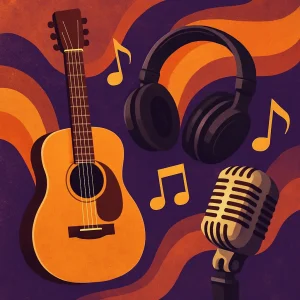What Is Rhythm and Blues (R&B) Music? Understanding the Genre’s Signature Style
Rhythm and Blues (R&B) is a genre of music that has continuously evolved while maintaining its emotional depth, soulful melodies, and rhythmic groove. Originally born from African-American communities in the 1940s, R&B was first characterized by a fusion of jazz, gospel, and blues elements, offering a powerful musical voice to a generation. Over the decades, the genre has transformed significantly—from the electrifying sounds of early soul to the sensual, beat-heavy productions of modern R&B. With smooth vocals, heartfelt lyrics, and an unmistakable groove, R&B continues to be one of the most influential genres in the world of music today.
The Birth of R&B: 1940s–1950s African-American Roots
The term Rhythm and Blues was coined in the 1940s as a replacement for what was then referred to as “race music.” It became a label for music created by African-American artists that combined the improvisational feel of jazz with the emotional weight of the blues. Artists like Ray Charles, Ruth Brown, and Big Joe Turner helped define early R&B with their bold lyrics, strong backbeats, and distinctive vocal delivery. During this period, R&B laid the groundwork for what would later become rock and roll, influencing a wide range of genres and artists.
Motown and the Rise of Soul: R&B in the 1960s
The 1960s marked a golden era for R&B, thanks to the rise of Motown Records in Detroit. Founded by Berry Gordy, Motown introduced a polished, pop-friendly version of R&B that dominated the charts and crossed racial boundaries. Artists like Stevie Wonder, The Supremes, Marvin Gaye, and The Temptations brought R&B to a mainstream audience while addressing themes of love, empowerment, and social change. This era also saw the emergence of soul music, a subgenre deeply rooted in gospel and R&B traditions.
The Funk Fusion: 1970s R&B
In the 1970s, R&B music began to evolve further with the infusion of funk elements—syncopated bass lines, groovy rhythms, and an overall dance-oriented sound. Legendary performers like James Brown, Earth, Wind & Fire, and Aretha Franklin ushered in an era of more upbeat and politically aware music. This decade also gave birth to the Quiet Storm radio format, known for its mellow, romantic take on R&B—perfect for late-night listening.
New Jack Swing and Contemporary R&B: The 1980s–1990s
The late 1980s saw the emergence of New Jack Swing, a fusion of R&B, hip-hop beats, and pop aesthetics, pioneered by producers like Teddy Riley and artists such as Bobby Brown, Janet Jackson, and Boyz II Men. The 1990s cemented Contemporary R&B as a dominant force in pop culture, with global superstars like Whitney Houston, TLC, R. Kelly, and Mariah Carey defining the sound of a generation. R&B also became closely intertwined with hip-hop, with collaborations and cross-genre influences shaping the Billboard charts.
The Evolution Continues: 2000s to Present Day
In the 2000s and 2010s, R&B embraced more digital production, electronic elements, and genre-blending, giving rise to a new era of creativity. Artists like Usher, Beyoncé, Alicia Keys, and Chris Brown led the way with chart-topping albums that pushed boundaries. More recently, artists such as H.E.R., SZA, Daniel Caesar, and The Weeknd have revitalized R&B with introspective songwriting, minimalist beats, and a strong indie influence. Today’s R&B scene thrives on streaming platforms, TikTok trends, and global collaborations, showcasing the genre’s enduring power and adaptability.
The Legacy of R&B: Influence and Impact
R&B music has not only influenced other genres like hip-hop, pop, and neo-soul, but has also played a vital role in cultural identity and social commentary. From civil rights anthems to modern-day love ballads, R&B has given generations of artists a medium to express emotion, resilience, and truth. Its deep roots and constant evolution ensure it remains a cornerstone of modern music.
